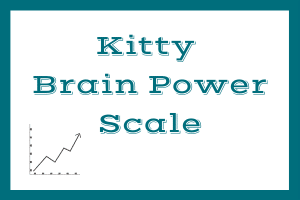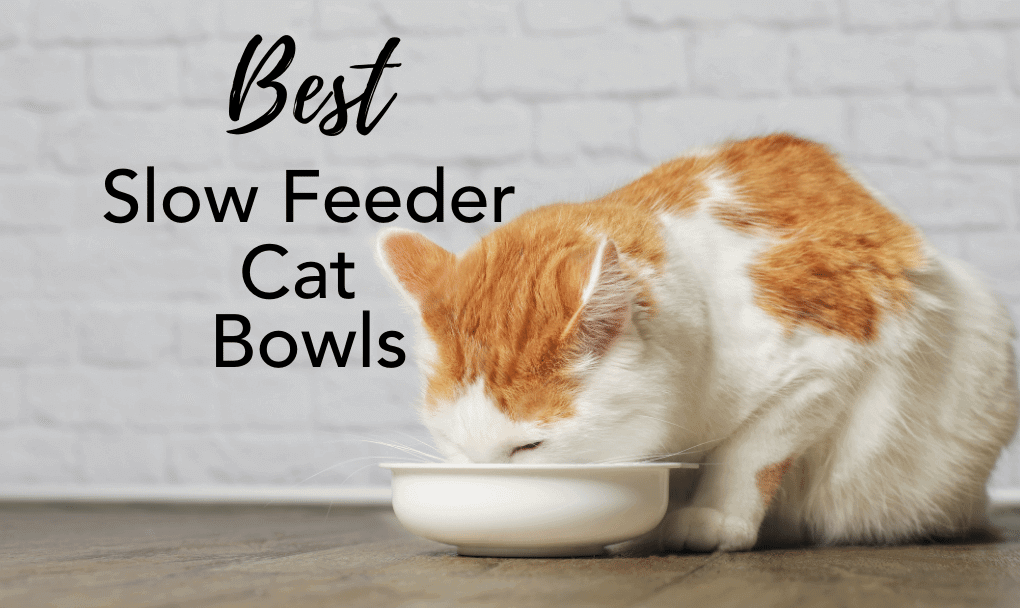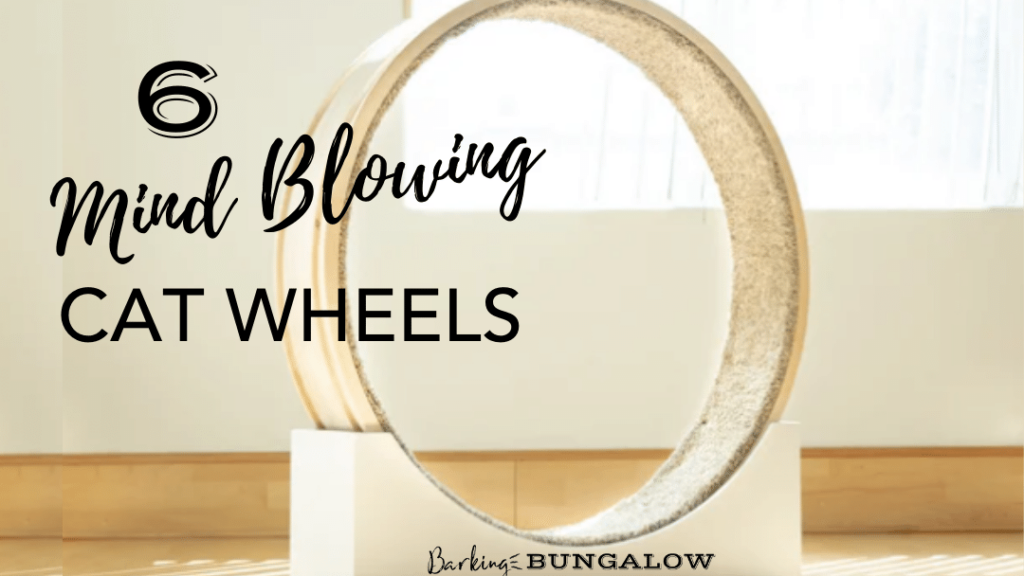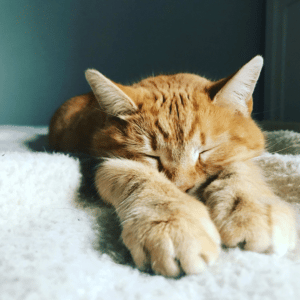Top Picks – Best Slow Feeder Cat Bowls
My cat, Jerry, and I have a lot in common: we both love naps, we both need attention on our own terms, and we both look forward to our meals. Unlike me and my nightly popcorn routine, Jerry mostly has her eating habits under control.
But every now and then, she goes through a phase of what I lovingly refer to as “last-supper syndrome” – the moment the kibble hits the bowl, she’s in it, gulping it down with nary a crunch to be heard.
I decided to spend some time researching this eating food quickly phenomenon, testing some of the cat food bowls designed to pump the brakes on fast-eating cats, and sharing the best slow feed cat bowls.
This post may contain affiliate links, and I may earn a small commission when you click on the links at no additional cost to you. As an Amazon Affiliate, I earn from qualifying purchases. You can read my full disclaimer here.
Jump to the Reviews
Why Cats Need A Slow Feeder Cat Bowl?
The urge to eat quickly can be triggered in cats by a variety of factors: food competition with other household pets, changes in food brand or type, or simply run-of-the-mill gluttony (see above: my popcorn issue). Unfortunately, it can eventually start to affect your pet’s health.
Cats are sweet little creatures of habit – Jerry always lets us know it’s mealtime every day, whether her bowl is empty or full. If your daily feeding routine has recently changed or if you don’t currently offer food in any kind of predictable way, your cat could have a bit of anxiety about their next meal.
Or perhaps your cat pal is a rescue in a new home and has previously experienced food insecurity? If so, it may be an ingrained habit for them. These habits can be tough to break, but with a bit of diligence, you can help them ease into more slow eating at meal time.
Once you’ve ruled out any medical issues, you might be wondering if anything can slow down your cat’s speed-eating sessions? My research says yes – slow feeder cat bowls might be the right solution for you and your favorite feline. Slow feeders can improve your cat’s digestive health and reduce bloating.
Choosing the Right Slow Feeder Cat Bowl
A slow feed cat bowl is a simple tool to help your cat slow their roll and eat slower when a meal is served, resulting in better digestion for your cat and fewer messes for you to clean up. Slower eating can prevent bloat and, as an added bonus, can provide mental stimulation. l There are many varieties of slow feed bowls, but they generally operate on the same principle: by making it slightly more difficult for your cat to access their food, you can slow the rate of what the cat eats.
Some slow feeder bowls are simply small obstacles placed in the way of visible food, and some may require your cat to solve a little puzzle before the food or treat is revealed. Choose the right slow feeder bowl based on your cat’s eating habits.
Things to Consider When Buying a Slow Feeder Cat Bowl
Wet or Dry Food
Some of these slow feeder cat bowls are intentionally designed for wet or dry food. Choose one that works with your cat’s food. It’s always good to get veterinary guidance before changing food.
Multi Cat Household
If your fast eater isn’t an only cat, or you have other cat friends to take into consideration, some slow feeder bowls are larger and more conducive to multiple cat feedings than others. If you have a multi cat household, you may need to feed your cats separately with their own individual food bowls in separate rooms.
Time Commitment
Are you a patient person? How much time do you have to put into training your cat to adapt to a new food bowl? Also, how patient is your cat? If your cat is a notorious old grump (my Jerry is a certified old grump, no shade), perhaps starting with a simpler slow feeder cat bowl is the way to go.

Types of Slow Feeding Bowls
Obstruction or Maze Bowls
Obstruction or maze bowls that simply block off food by height or depth work best for cats who are meal time wolfers that suffer no fools. Even the most stubborn cats will be motivated by the sight of their food to overcome the minor obstacles placed in front of them, but will still find that they cannot eat as quickly as before from their food bowl.
These should require minimal training on your part to acclimate your kitty to this new way of eating from slow feeder bowls. The fist time you give them the feeding bowl smeared with cat food they will be convereted. Maze slow feeding bowls can replace your cat’s regular food bowls.
Puzzle Feeders
Puzzle-type slow feeders add a more complex element of problem-solving – typically, the food is hidden in some way, and they require your cat to solve a little puzzle before eating. These will likely require a bit more one-on-one training for your cat to understand, and will likely work best for cats who are craving a bit of stimulation along with their meals.
Older, more stubborn cats could flatly refuse to put forth the effort needed to acquire their food from these slow feeder cat bowls, so be prepared to put in some training time. These are also good for smaller amounts of food – they are perfect for treats!
Tunnel Feeders
Tunnel feeders are a bit of a hybrid – there is a learning curve for cats to figure out how to access their food (the kibble may be partially out of sight), but once they realize the little tubes are where the food is now, they will likely work to get it. These are generally not terribly difficult for cats to figure out, but still serve the purpose of slowing down your cat’s meal time.
Once you choose the best slow feeder cat bowl for your feline’s needs, scroll down below for tips on how best to incorporate this new element into their meal time eating process. Now, onto the reviews!
Kitty Brain Power Scale

I’ve included my own Kitty Brain Power Scale (KBPS) rankings to help you choose which slow feeder cat bowl is right for you and your cat on a scale of 1-5. The higher the number, the more challenging it for you cat to get the food.
1= bless their heart, they’ll do just fine
5= best for Al-purr-t Einsteins
Reviews: The Best Slow Feed Cat Bowls
Best Basic Slow Feeder
Outward Hound Slow Feeder
Dimensions 8.75 x 8.75 x 2 inches
Capacity 2 Cups


The Outward Hound slow feeder is a straightforward maze slow feed bowl for cats. The maze food bowl slows the cat’s eating. There are no bells and whistles here, but it’s an affordable and reliable option for first-time slow eaters. You can add dry kibble or wet food and use it as a replacement for their standard food bowl.
It has a non-slip, non-skid base to prevent spills. The plastic material in this slow-feeder is non-toxic, BPA free, and dishwasher friendly. It comes in multiple sizes and shapes. You can swap out different style bowls to increase mental stimulation.
Pros
- Affordable option
- Works with wet and dry food
- E dishwasher safe
- Non-toxic and BPA and Phthalate free plastic
Cons
- Basic slow feeder
- Cats may become bored over time
Best For Quick Eaters
Trixie Cat Activity: Tunnel Feeder
Dimensions 11 x11 x 5.5 inches
Capacity 1.5 Cups Dry Food


This large capacity slow feeder has a relatively small footprint and comes in a low-key plum and gray color scheme. It has a wide-mouth container on top for easy filling, and although it’s made from plastic, it feels sturdy.
This slow feed cat bowl incorporates six small tunnels that require your cat to scoop and dig for their food at the bottom of the tubes. It sits centered on a circular base tray that helps keep food from spilling onto the floor. The manufacturer includes helpful tips on how to encourage your cat to use the feeder.
It’s worth noting that the tunnel openings are large enough to be dangerous for a very small kitten. This slow feeder cat bowl is suitable for cats aged 3 months and over.
Pros
- Works as a daily feeder or for treats
- Adjustable output level
- Dishwasher safe and non-slip bottom
- One year warranty
Cons
- Requires a moderate amount of training
- Dry cat food only. Not for use with wet food
- Needs to be placed in a space where the cat can access all sides of feeder
Best For Curious Treat Lovers
Trixie Cat Activity: Brain Mover
Dimensions 11x13x2.5 inches
Capacity 1.5 cups
Top Pick for Super Smart Cats


Another fun offering from Trixie, this rectangular Brain Mover puzzle feeder comes in three different colors gray/burgundy/millennial pink color combo. To help your cat eat slower, its surface is split into various tasks, which, once completed, reveal hidden compartments for treats. It’s an interactive puzzle to help slow down their eating habits. The tasks include: pushing over lightly weighted balls, a drawer with a pull-string, and a lever for your cat to push.
These tasks aren’t impossible but will definitely require some time investment from you to help your cat get started. One of the best parts about the Trixie feeders is that they all come with specialized instructions and tips on how to get your cat interested that are specific to each type of feeder.
In theory, you could fill the treat spaces with wet food, but I personally wouldn’t – cleaning crusty cat pate remnants from tiny spaces is low on my list of fun things to do on a Wednesday.
Pros
- Great choice for dry treat feeding
- Mental stimulation for curious felines
- Includes links for training videos
- Works with wet and dry food
- Easy to Clean. Dishwasher Safe
Cons
- Capacity too low for daily meal time feeding
- Could require additional training time
Best For Agents of Chaos
Doc & Phoebe’s: Indoor Hunting Cat Feeder Kit
Capacity: 1.6 cups dry food
Dimensions: 3 mice cat toys, 1 trainer, and 1 portion filler


Designed by a veterinarian, Dr. Liz Bales, this unique slow feed system turns mealtime into an adventure. Dr. Bales posts that quick eating isn’t your cat’s actual problem – it’s bowl feeding. For cats to be truly fulfilled, they need the freedom to be the hunters they were born to be.
This kit includes three fabric mice “skins” that each contains a small food dispenser. They look like small cat toys. Simply fill the dispensers, wrap them with the fabric mice and hide them in your house. Your cat will hunt the cat toy mice and eat when and where they like.
Both the feeders and scoop are dishwasher safe and BPA and Phthalate free. While this isn’t an inexpensive system, it does more than simply slow your cat’s pace of eating – this cat slow feeder is specifically designed to be mentally stimulating. This clever design taps into their natural instincts, which could directly contribute to a healthier and happier fur buddy.
Pros
- Suitable for treats or regular feedings
- Encourages independence
- Mentally stimulating
- Helps with weight control
Cons
- Strings on mice tails could become detached
- Potentially messy
- Dry cat food only
Best For Wet Food Aficionados
LickiMat
Dimensions 7.9 x7.9inches


Mat Texture Styles: Buddy (smart choice for chunky spreadable treats), Playdate (good for most types of wet cat food, tuna, etc.), Soother (for runny wet food)
My little angel isn’t a wet food fan, but I almost wish she was because this is one of the most all-around useful slow feeders I’ve found. The LickiMat’s primary job is to help your cat slow their pace of eating, and it does just that. These low-profile, textured surface mats provide little crevices for wet foods to settle into and require only moderate effort to dislodge.
But this feeder works overtime to help sustain your cat’s overall health, too – regular use of the LickiMat encourages your cat to generate more saliva, which contributes to cleaner teeth, healthier gums, and fresher breath.
Plus, the act of licking the various surfaces full of wet food encourages the release of endorphins and is soothing to anxious felines. A cat who is less anxious, eats more slowly, and has better smelling breath? Sign me up!
Pros
- Great value
- Made of food-grade rubber & dishwasher safe
- Easy to use
- Best for wet food
- Easy to Clean. Dishwasher Safe
Cons
- Requires frequent cleaning
- Not ideal for dry food
Best For Multiple Cat Households
Neater Pet Brands: Raised Slow Feeder
Dimensions 12.5 x 8.2 x4.5 inches
Capacity 2.5 cups dry food


The Neater Raised Slow Feeder is a great entry-level choice in the world of slow feeder cat bowls. This feeder features rubber feet to reduce tipping and adjustable height options. Its large cat food capacity is a benefit if you have more than one cat. It also comes in subtle, tasteful colors and would blend seamlessly with almost any decor. The raised height makes it a excellent option for elderly cats.
The Neater Feeder slow feed cat bowl is two pieces – a raised platform on the bottom (that can also be used as a water dish if you don’t want the extra height) and a food bowl that sits on top. The food bowl has widely spaced ridges that help to slow down your little speed eater, creating little pockets of cat food that are easy to see but require a bit of finesse to access. They make a larger size for two cats or gluttonous small dogs.
Pros
- Great choice for beginners and senior cats
- Suitable for wet or dry cat food
- Large capacity
- Easy to clean. Dishwasher safe.
Cons
- Could potentially flip over at rowdy mealtimes
- Too tall for small cats/kittens
- A bit pricey
Best Ceramic Slow Feeder
Lorde Slow Feeder Cat Bowls
Dimensions 11.1 x 10.75 x 2.64 inches


If you feel ceramaic is more of safe material for your cat’s mealtime the Lorde slow feeder cat bowl is a clear winner. It’s one of the more attractive slow feeders with a choice of two clever designs. Your feline friend can nibble their cat food from a sea of floating fish or fish bones.
The Lorde slow feeder’s maze of fish contributes to healthy eating by slowing down feeding time. When the cat eats from the smooth ceramic surface prevents the cat’s mouth and tongue from being scratched. It’s easy to clean and works with dry and wet cat food. Pair this gorgeous cat feeder with a ceramic water bowl and your cat will live the luxe life.
Pros:
- High-quality ceramic (BPA free)
- Attractive design
- Promotes slow eating
- Great for beginners
Con
- Ceramic can break more easily
- Simplicity may bore cat over time
Best Non-Puzzle Challenge
Petstages Kitty Slow Feeder
Dimensions 5.5 x 5.5 x 1 inches
Capacity ¾ Cup
KBPS 2.5

The Petstages slow feeder bowl from the Outward Hound team is similar to other maze slow feeders but has higher ridges offering cats an additional physical challenge. They claim this feeder can slow down feeding times up to 10x.
This plastic feeder is BPA free and has a non-slip bottom to keep the slow feeder in place while your cat takes on the ultimate challenge. In addition it’s top-rack dishwasher safe for easy cleaning.
Petstages is dedicated to the feline slow eating movement and has a line of cat puzzles, and cat treat dispensers toys. If your cat gets bored, you can spice things up by adding these other options at feeding time.
Pros
- Promotes slow eating
- Provides an additional physical challenge
- Non-slip rubber base
- Easy to Clean: hand wash or dishwasher safe
- BPA free
Con
- Some cats find barriers too high
Reliable and Hilarious Design
Fish Bowl Feeder
Dimensions SMALL 6.2” DIA x.87” ht., LARGE 8.7” DIA x1.4 .” ht.
Capacity See Below
KBPS 1.5


The fish shaped cat slow feeder is made of food-grade Melamine plastic and comes in two different sizes and three different pawsh pastel colors. The hilarious raised shark design will amuse humans while providing a slow meal for your feline friend. This slow feeder has more space between the eating obstacles than other slow feeders and may not be ideal for more advanced slow eaters.
The smooth surface prevents your cat’s tongue and mouth from being scratched. It’s non-toxic, odor-free, and can be hand washed or cleaned in the dishwasher.
The fish bowl feeder doesn’t provide information on how much food this feeder holds, but many users have mentioned portioning out the meal. This tactic avoids food piling up above the shark tales , rendering it no longer a slow feeder.
Pros
- Dependable slow feeder
- Amusing for humans and cats
- Food grade melamine
- Easy to Clean: hand wash or dishwasher safe
- Works for wet and dry food
Cons
- Not ideal for the more advanced slow eater
Why Does My Cat Vomit Right After Eating? Digestive Distress
Quality cat food is expensive, and seeing it head right back up for a curtain call on my living room rug is not the highlight of my day. It seems like many of my FWCs (friends with cats) deal with this same issue.
(Not) Fun Fact: when your cat’s meals make an almost immediate reappearance after being eaten the first time, it’s not technically as a result of vomiting – it’s regurgitation. Call it what you will, at feeding time, it’s gross and a bummer to see your little furry friend pathetically staring up at you next to a hill of undigested cat food.
My cat will sometimes even try to pick up where she left off and start snacking on the regurgitated food. It doesn’t seem to faze her, but I can’t ignore it and let her turn into a Gross Cat when my dream is for her to be a Not Gross Cat.

Slow Feeder Training Tips
If your kitty does not immediately take to the slow feeder cat bowl, they will at best ignore it and, at worst drive you to madness with their vocal protests. Let’s face it, if someone suddenly decided all your meals would be eaten from a series of little tubes that spin around on a stand, you might be grumpy about it, too. Don’t despair, just keep these tips in mind as you embark upon your slow feeder journey:
Pace Yourself
Hot take: most cats are stubborn, so expecting an overnight success story is probably unrealistic. It may take a week or two to see them start to take to a new slow feed bowl. If you’re using a feeder that has a learning curve, keep your training sessions brief – 10 minutes a day is a good starting point.
One Change at a Time
Whether your cat likes dry or wet food, start with your cat’s current dietary intake. Choose a slow feeding bowl that works with the type of food they are already accustomed to eating. As your cat acclimates to the slow feeder bowl, you can adjusts the cat’s food. We all know cats love to work on their own timeline.
Set the Mood
Schedule your training sessions when both you and your cat are relaxed. For example, try to time your training or feeder introductions when your cat is awake, alert and at least moderately hungry.
Lower the Stakes
Sometimes less is more. By starting with a few treats rather than fully feeding of cat food, your cat can slowly acclimate to a new style of receiving food.
Try DIY
If you’re reluctant to drop a bunch of cash on slow feeders that might not work for your pal, you might want to try an inexpensive, temporary solution first: a paper egg carton can make a great beginner slow feeder.
The Wrap Up on the Best Slow Feed Cat Bowls
With a bit of patience and the right slow feeder cat bowl, even the most hyper pet will be eating at a normal pace in no time. And even if they don’t seem outwardly grateful, their digestive systems will thank you with fewer messes to clean-up after mealtimes. Keep your pet healthy and happy!
If you like this slow feeder round-up, check out our other recent cat-friendly posts.

Jamie Johnson is Barking Bungalow’s Cat Contributor but she is an all-around animal lover since childhood when she got her first dog, Lilly, a rescue terrier with an unfortunate underbite and a face that only a six-year-old could love. Through the years, she’s befriended a variety of cats, dogs, rabbits, gerbils, fish, and lizards, just to name a few. Her current pet pal is Jerry, a flame point Siamese who loves to eat cobwebs and cuddle.
Barking Bungalow loves and lives with lots of cats. We are not vets and do not provide veterinary advice.
Copyright 2022




